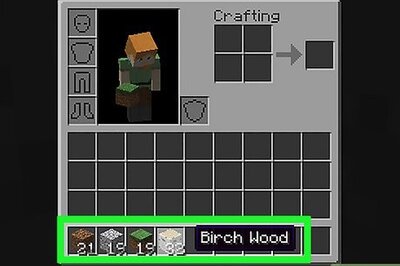
views
Kolkata: A journey that began 52 years ago in the autumn of 1966 now draws to an unceremonious close. The oldest Communist mouthpiece of Bengal, Kalantar, owned and published by the West Bengal state council of Communist Party of India (CPI), would bring out its final edition on October 31 owing to “acute resource and financial crunch”.
This would draw curtains on a legacy that the party, along with its Left partners in the state, is finding increasingly difficult to hold on to politically.
Things looked different when the Bengal unit of CPI first published Kalantar as a weekly on December 29, 1962. Prominent Marxist poet Bishnu Dey, inspired by Tagore’s political treatises which were posthumously compiled under the name of ‘Kalantar’ collection, suggested that the mouthpiece be similarly named. Filmmaker Satyajit Ray, a master typographer and calligrapher, designed its masthead.
In less than four years, on October 7, 1966, Kalantar metamorphosed into a four-page daily. The stage seemed set for the Left forces in Bengal which, in the aftermath of split in the Communist Party, were taking the historic Food Movement in the state to its zenith. It was in the process of dealing a body blow to the ruling Congress government.
Within four months, the Left would join hands with the Ajoy Mukherjee-led Bangla Congress and form the first United Front government by dislodging the Congress party from power. The development, albeit short lived, arguably paved way for the Left’s far more stable ascent to power in Bengal a decade later. It was in such a context that the need for an ideological mouth piece which would reach the masses was felt by the Left forces like never before. Kalantar filled that void.
Veteran communist leader Bhabani Sen took charge of the daily as its first editor and was followed by the likes of Jyoti Dasgupta, Prabhat Dasgupta and Goutam Chattopadhyay. The only glitch in Kalantar’s journey so far was from November 1992 to May 1995.
The publication of the daily remained suspended for an upgrade in technical infrastructure. But in November 2004, when the paper launched its colour edition and emerged as an eight-page daily. The then union information minister Jaipal Reddy and party’s general secretary AB Bardhan were present at the function in Kolkata. Very few could foresee that the euphoria would barely last a decade.
The paper’s dream run continued till 2011 when the Left Front was toppled by Mamata Banerjee’s Trinamool Congress. That marked the slide.
“Our state government ads dried up after the Trinamool came to power in 2011. That caused a mortal blow to our revenues. We have always subsidised the paper from the party. But the operational costs have skyrocketed. The central government DAVP ads were also stopped after the Modi-government took charge in 2014. The burden was too heavy for the party to bear. We took the decision to suspend operations because we had no choice. It was taken with a lot of reluctance and a heavy heart,” said Manju Kumar Majumdar, former CPI state secretary who was the newspaper’s publisher from 1996 to 2010.
Senior employees of the daily, however, maintain this is merely a temporary suspension of publication until they are “back with resources and upgraded technological know-how.”
“The editorial board would soon meet and decide on our next course of action after 31 October. We are planning to continue publishing Kalantar as a weekly or a fortnightly to register our presence in public life. The arrangement would continue till such time we are able to revive the daily newspaper,” a senior member of the editorial team told News 18 on conditions of anonymity.
It was also reliably learnt that the current editor of the daily, Kalyan Banerjee, would write a detailed account of the circumstances in which the paper is shutting down in the final two editions of October 30 and 31. He would also make an appeal to the readers for their “support and faith in the newspaper till it revives”.
“Of the 50-odd employees of the newspaper, a significant number are retired professionals who donate their time and expertise for free,” Majumdar said and added: “Despite that, the establishment cost with virtually no financial support from outside is well beyond the means of the party.”
The financial distress aside, there’s also a larger question that seems to be bugging the members of the editorial board of Kalantar… that of whether the current political and ideological crisis of the Left in India is responsible for the newspaper’s inability to generate new readership. And whether in the absence of new readership, even if niche, it is at all possible to resurrect a newspaper whose circulation graph has nosedived in the years gone by.



















Comments
0 comment